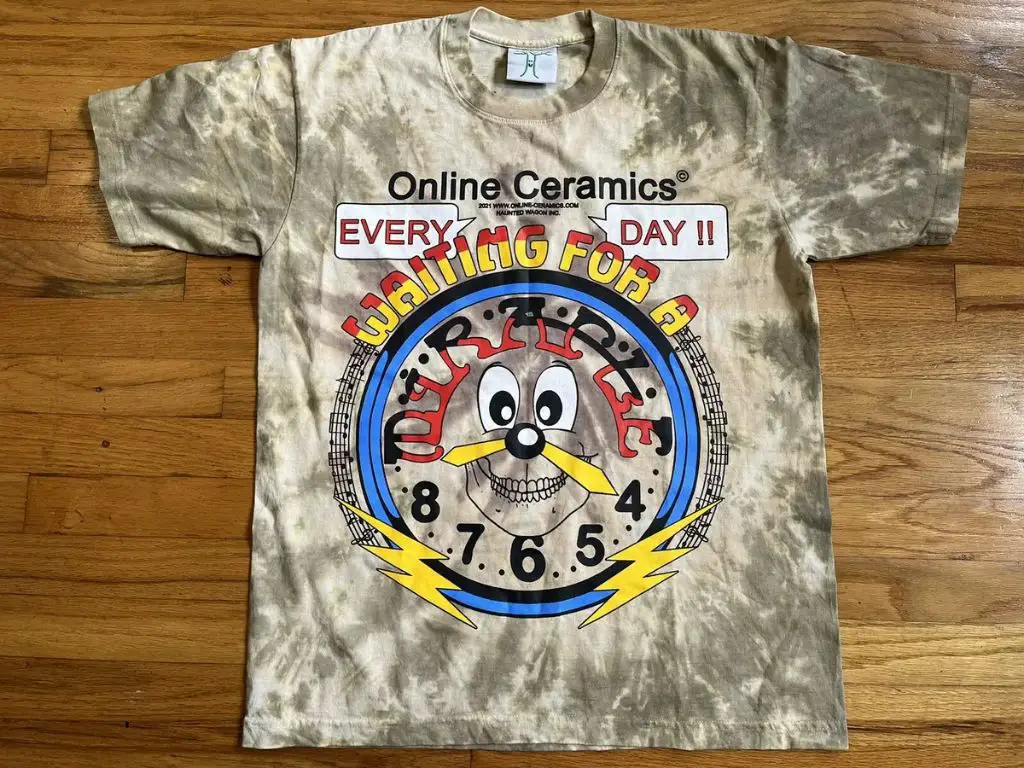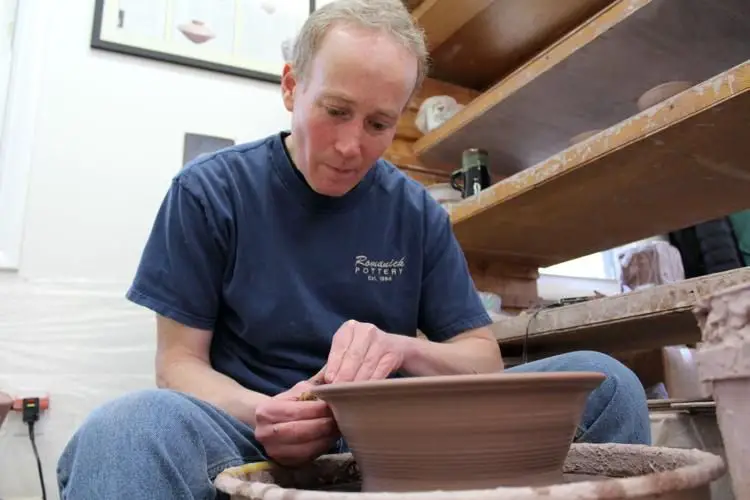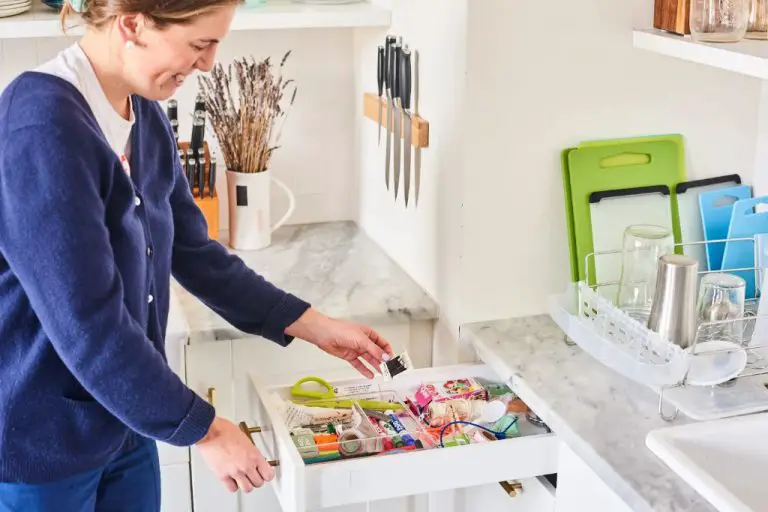How Much Is Online Ceramics Worth?
The online ceramics market refers to the buying and selling of ceramic art, pottery, and other ceramic goods through ecommerce platforms and online retailers. With the growth of the internet and ecommerce, more ceramic artists, studios, and galleries have started selling their wares online in addition to or instead of traditional brick-and-mortar stores.
The global ceramics market was valued at over $239 billion in 2022, with online sales making up a growing segment of the market. Major online retailers like Etsy, Amazon, and eBay have become popular channels for individual ceramic artists and small studios to reach customers. Dedicated online ceramics stores and marketplaces have also emerged to connect ceramic artists directly with buyers.
The online ceramics market provides a global platform for ceramic artists and makes unique, handmade ceramic pieces more accessible to buyers around the world. It has created new opportunities for emerging artists while also allowing established studios to expand their reach. As online art sales continue to grow, the online ceramics market is poised for further expansion.
Market Size
The global ceramics market was valued at $239.53 billion in 2022 and is expected to grow at a compound annual growth rate (CAGR) of 5.2% from 2023 to 2030, reaching nearly $385 billion by 2030 according to Grand View Research. The ceramics industry has shown steady growth over the past decade. Key factors driving market growth include increasing demand from various end-use industries such as construction, electrical & electronics, transportation, and medical coupled with development of innovative technologies and new product launches.
According to a report from Fortune Business Insights, the global ceramics market size was $123 billion in 2020 and is projected to reach $219 billion by 2028, growing at a CAGR of 7.7% during the forecast period. The steady growth can be attributed to rising infrastructure development and construction activities worldwide as well as advancements in ceramic production methods and development of advanced ceramics materials.
Average Prices
The price range for pottery and ceramics can vary greatly depending on factors like the type of piece, materials, artist reputation, and more. According to discussions on Reddit, the average costs for a ceramic artist to make pieces tends to range from $1-2 per pound of clay up to $10-20 per pound when factoring in things like studio expenses, materials, firing, and the artist’s time [1]. This means the retail price for buyers will be higher.
For handmade pottery like mugs, bowls, and vases, prices often range from $20-$50 for more basic pieces from newer artists up to $100-$300 for intricate, decorative, or large statement pieces according to pricing guides [2]. Custom sculptures and commissioned work by established artists can fetch much higher prices in the range of $500-$2,000+. High-end galleries sell rare ceramic pieces by famous artists for $5,000-$50,000+.
Factors Influencing Value
There are several key factors that influence the value of ceramic pieces in the online marketplace. According to experts on Quora, the most important factors are:
Brand
The brand or artist behind a ceramic piece greatly impacts its value. Works by well-known ceramic artists or brands, like Wedgwood, Royal Doulton, or Moorcroft, often command higher prices than pieces by unknown makers.
Quality
The quality of the ceramic piece, including the clay body, glaze, and craftsmanship, is critical. Finer porcelain clays that are thinner and more delicate are more valuable than basic earthenware. Complex or creative glazes and painting also add value.
Materials
Ceramic pieces that incorporate precious materials like gold, silver, or gems are more valuable. Hand-painted pieces also command higher prices than mass-produced ones.
Craftsmanship
Evidence of high-quality craftsmanship, like precise sculpting, painting, and glazing techniques, increases value. Limited production pieces made by hand are worth more than mass-produced factory items.
Popular Materials
When it comes to online ceramics, some of the most popular and commonly used materials include stoneware clay and porcelain. According to discussions on Reddit, stoneware clay seems to be the most prevalent material used for online ceramics like t-shirts and other apparel from brands like Online Ceramics.
Stoneware fires at lower temperatures which makes it more accessible and affordable. It also has a nice smooth surface that takes decoration well. Porcelain is another popular option, especially for higher end pieces. It’s translucent white color and durability make it a great choice. However porcelain requires higher firing temperatures so pieces made from it tend to be more expensive [1].

Both stoneware and porcelain are priced affordably for casual buyers but can get quite expensive for rare, limited designs. On average, a basic t-shirt from Online Ceramics costs $36 while hoodies average around $98. Some special edition pieces have sold for $300 or more [2].
Pricing Strategies
When pricing their work, ceramic artists consider several factors including materials, time, skill level, and demand. Many use a pricing formula to calculate the wholesale and retail prices of their pieces.
A common formula is to take the materials cost and multiply it by 3-4x to cover studio overhead and labor. Then multiply the resulting wholesale price by 2-2.5x to reach the retail price. For example, if materials cost $20, the wholesale price would be $60-80 and the retail price $120-200 Pricing ceramics.
Artists also consider the skill level involved, charging more for complex techniques like hand sculpting versus basic wheel throwing. Established artists with a following can demand higher prices. Exclusive or limited editions also fetch premium pricing 015 – How to Price Your Pots.
Ultimately pricing comes down to what the local market will bear and finding the sweet spot between undervaluing work and pricing out buyers.
Luxury Pieces
Luxury handmade ceramics and porcelain are priced a premium due to their uniqueness, artistry, and exclusivity. According to Luxury Ceramics – Etsy, high-end ceramic pieces can cost over $75 for a single item. Brands specializing in luxury ceramics like Kari Ceramics offer handmade stoneware dinner sets priced at €39 and up. Sites like My Luxury Products sell exclusive porcelain ranging from €200 to over €1000.
Factors that increase the value of luxury ceramic pieces include limited production runs, renown of the ceramic artist or brand, innovative or intricate designs, exotic materials like 24k gold or platinum accents, and handcrafted construction versus mass production. The perceived value, brand cachet, and aspirational qualities also allow luxury ceramics to command premium pricing.
Emerging Artists
Emerging ceramic artists who are just starting out typically price their work very affordably. According to Pricing work as an emerging artist, new artists may use a pricing formula like $8-10 per linear inch to arrive at a fair price for a piece. This results in very accessible price points for handmade ceramics, often between $100-$300 for smaller sculptural works or functional pieces like mugs and vases.
Affordable pricing allows emerging artists to attract early sales and build an initial collector base. As Clay Culture: Pricing Artwork notes, emerging ceramic artists typically price work based on material costs and time invested, not according to gallery standards or auction market values. Their focus is on establishing their reputation and getting exposure, rather than maximizing profits on each piece.
Lower prices provide an entry point for new collectors to purchase original works. This enables emerging artists to build relationships with buyers who may continue collecting their work as their career progresses. Initial buyers also help generate word-of-mouth exposure and referrals for the artist.
Secondary Market
The secondary market for ceramics refers to the resale of previously owned ceramic pieces through auctions, galleries, online marketplaces, and collectors. There is an active secondary market for antique, vintage, and contemporary ceramic works. Many pieces appreciate significantly in value over time, making ceramics a potentially valuable investment.
According to a 2022 market report, the global pottery and ceramics market was valued at over $10 billion in 2021, indicating a strong demand for ceramic works. As with other collectibles like art and antiques, the value of ceramic pieces is influenced by factors like age, rarity, artist reputation, condition, provenance, and trends in the market.
Vintage and antique ceramics by renowned artists or studios can sell for multiples of their original prices at auction. For example, pieces by influential ceramicists like Bernard Leach or Shoji Hamada regularly fetch five- and six-figure sums. Even works by unknown artists can appreciate into the thousands if they are rare examples from important periods like Ming Dynasty porcelain.
Contemporary limited edition or one-of-a-kind works by today’s top ceramic artists also command high prices, especially if the artist becomes collectible later on. Savvy collectors look to acquire emerging talents early on. With care and proper storage, ceramics can maintain their condition and value for the secondary market.
Future Outlook
The global ceramics market is projected to grow at a CAGR of over 5% from 2022 to 2030, driven by increasing demand from various end-use industries (Ceramics Market Size In 2023 : Forecasting Share and Growth Rate Increasing Demand 2031). The market is forecasted to reach USD 240 billion by 2026, up from USD 182 billion in 2021 (Ceramics Market is Forecasted to Reach US$ 240 Billion by 2026 Rising Investments by Governments in Infrastructure Development – Yahoo Finance). Key factors influencing future growth include:
- Urbanization and growth of the construction industry, especially in developing countries.
- Increasing use of ceramics in electrical and electronics due to their dielectric, piezoelectric, ferroelectric, and magnetic properties.
- Advancements in 3D printing enabling more innovative ceramic product designs and manufacturing techniques.
- Growing adoption of nanotechnology leading to highly advanced technical ceramics.
- Environmental regulations promoting use of ceramics over metals and plastics due to durability and recyclability.
The market is rapidly evolving with more small-scale artists and designers embracing digital platforms to sell their handmade ceramics globally. While massive growth is projected, rising raw material and energy costs could pose challenges to profit margins (Ceramics Market Size In 2023 : Forecasting Share and Growth Rate Increasing Demand 2031). Overall, the industry looks poised for robust expansion as ceramics gain wider recognition as a versatile, sustainable material across diverse applications.



